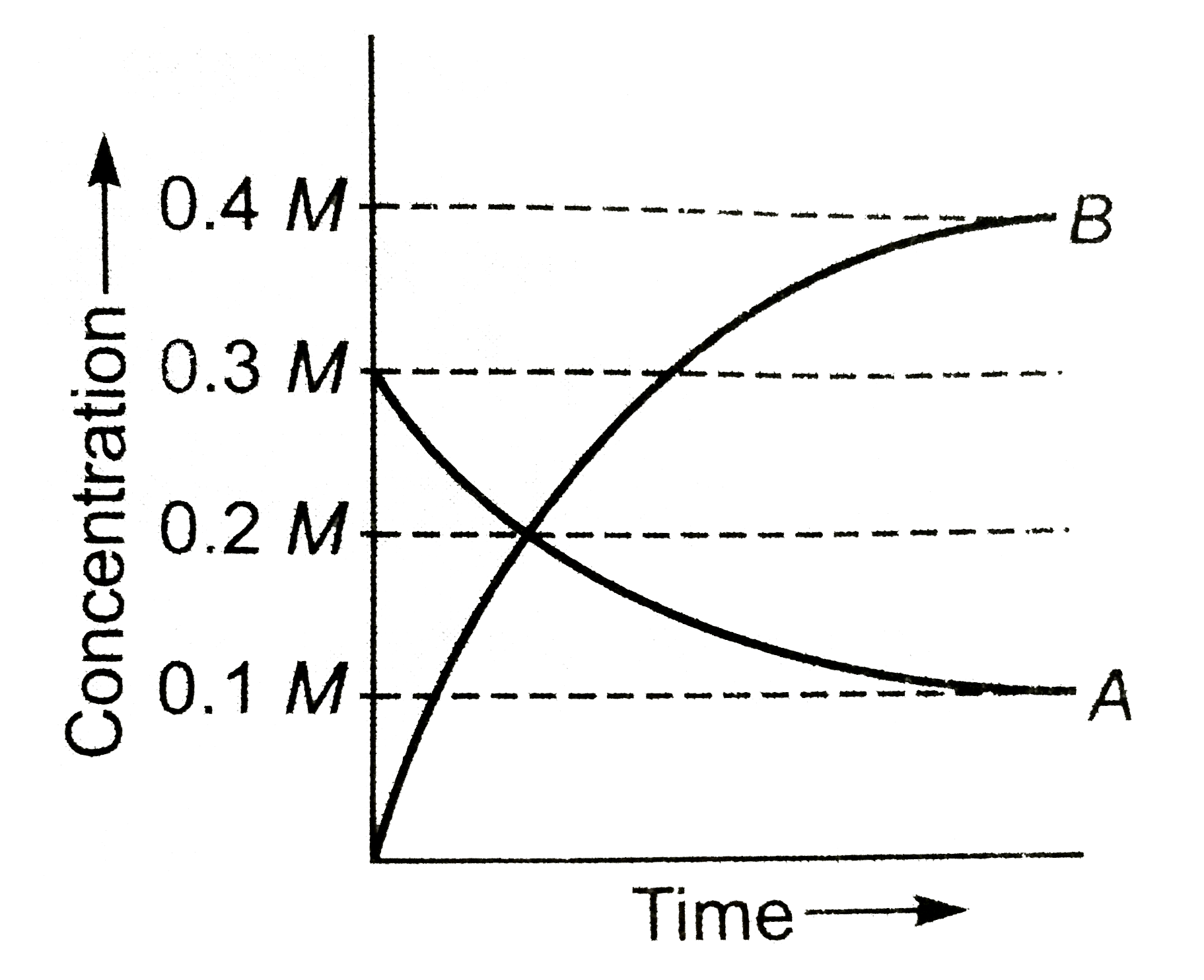1 mole of A is allowed to decompose in a 1-litre container. 0.4 mole of B was produced at equilibrium. The equilibrium constant Kc for the equilibrium
A(g)⇔2B(g)+C(g), is
0.04
0.053
0.08
0.106
The correct Answer is:A
Step by step video, text & image solution for 1 mole of A is allowed to decompose in a 1-litre container. 0.4 mole of B was produced at equilibrium. The equilibrium constant K_(c) for the equilibrium A(g)hArr2B(g)+C(g), is by Chemistry experts to help you in doubts & scoring excellent marks in Class 12 exams.
Updated on:21/07/2023Topper's Solved these Questions
Similar Questions
In an experiment , 2 moles of HI are taken into an evacuated 10.0 litre container at 720 K. The equilibrium constant equals to 0.0156for the gaseous reaction, 2HI(g)⇔H2(g)+I2(g). find equilibrium concentration of HI(g),H2(g),I2(g).
View SolutionIn an experiment 5 moles of HI were enclosed in a 5 litre container . At 717 K equilibrium constant for the gaseous reaction , 2HI(g)⇔H_2(g) +I_2(g) is0.025.Calca––tetheequilibriumconcentrationofHIH_2 and I_2 . What is the fraction of HI that decomposes ?
View Solution
Knowledge Check
The figure shows the change in concentration of species A and B as a function of time.
The equilibrium constant Kcfor the reactionA(g)⇔2B(g) is :
 AKc>1BK<1CK=1Ddata insufficient
AKc>1BK<1CK=1Ddata insufficient1 mole of 'A' 1.5 mole of 'B' and 2 mole of 'C' are taken in a vessel of volume one litre. At equilibrium concentration of C is 0.5 mole /L .Equilibrium constant for the reaction , A(g)+B(g)⇔C(g) is
A0.66B0.066C66D6.6In the decomposition reaction AB5(g)⇔AB3(g)+B2(g), at equilibrium in a 10 litre closed vessel at 227∘C, 2 moles of AB3, 5 moles of B2 and 4 moles of AB5, are present. The equilibrium contstant Kc for the formation of AB5(g) is
A0.25B4.0C0.04D2.5
2 mole of X and 1 mole of Y are allowed to react in a 2 litre container.when equilibrium is reached, the following reaction occurs
2X(g)+Y(g)⇔Z(g) at 300 K.
If the moles of Z at equilibrium is 0.5 then what is equilibrium constant KC?
View SolutionEquilibrium constant Kc for the equilibrium A(g)⇔B(g)+C(g) is 0.45 at 200∘C.
One litre of a container contains 0.2 mole of A, 0.3 mole of B and 0.3 mole of C at equilibrium. Calculate the new equilibrium concentrations of A, B and C if the volume of the container is (a) doubled (b) halved at 200∘C.
View Solution5 litre vessel contains 2 moles of each of gases A and B at equilibrium. If 1 mole each of A and B are removed. Calculate KC for the reaction A(g)⇔B(g)
View SolutionIn 500 ml capacity vessel CO and Cl2 are mixed to form COCl2. At equilibrium, it contains 0.2 moles of COCl2 and 0.1 mole of each of COandCl2, The equilibrium constant KC for the reaction CO(g)+Cl(g)⇔COCl2(g) is
View Solution4.5 moles each of hydrogen and iodine heated in a sealed 10 litrevesel. At equilibrium, 3 moles of HI was foun. The equilibrium constant for H2(g)+I2(g)⇔2HI(g) is
View Solution

